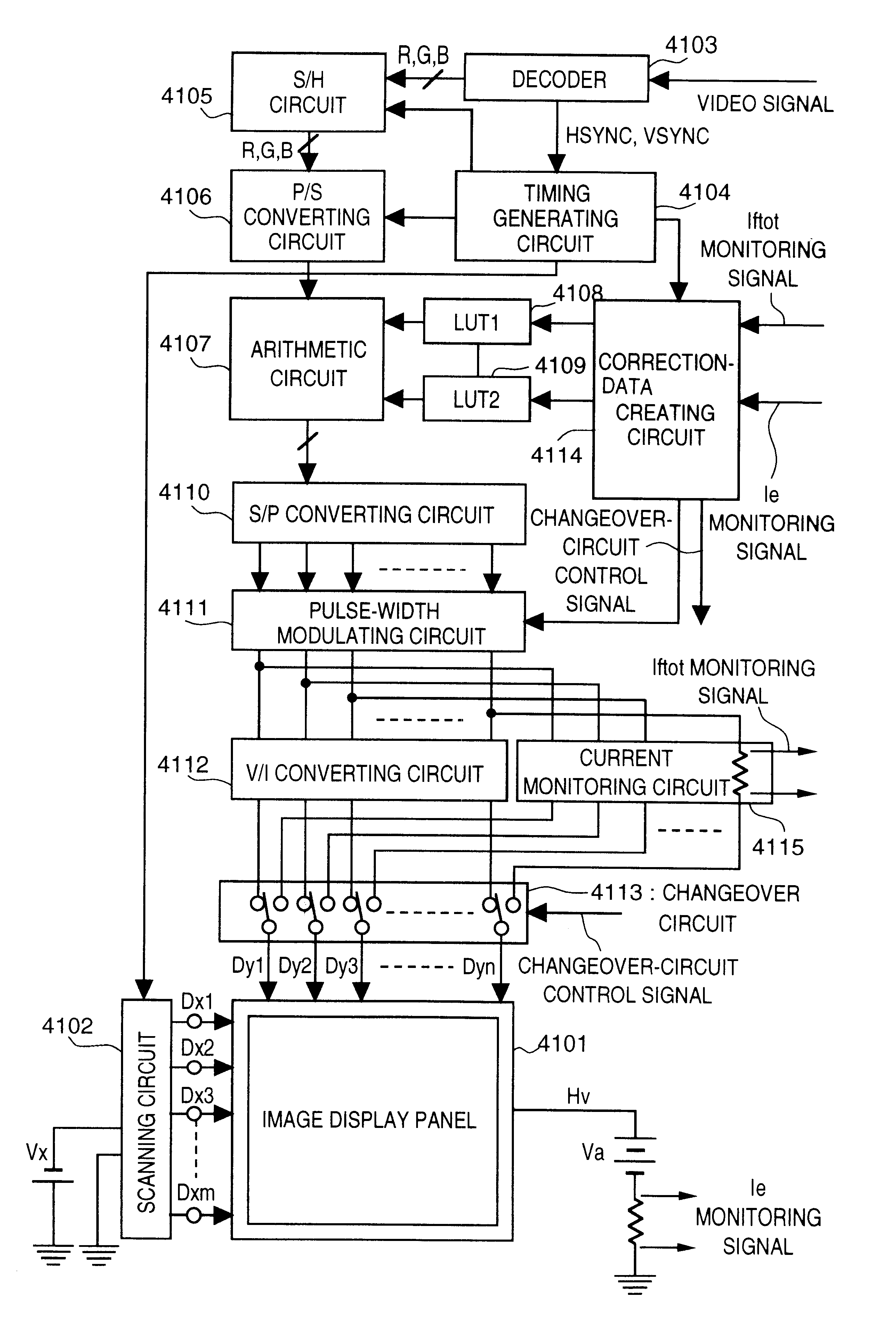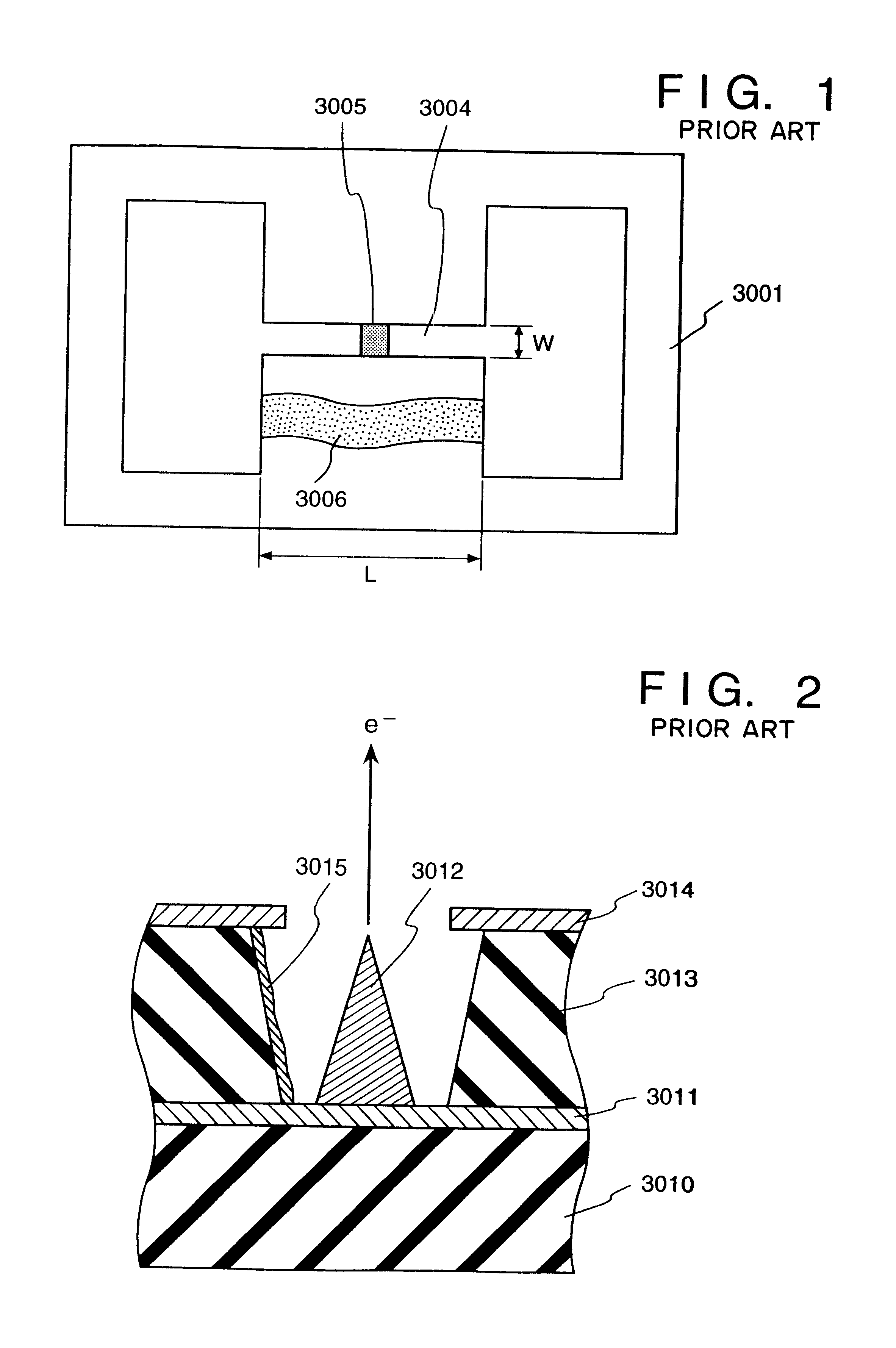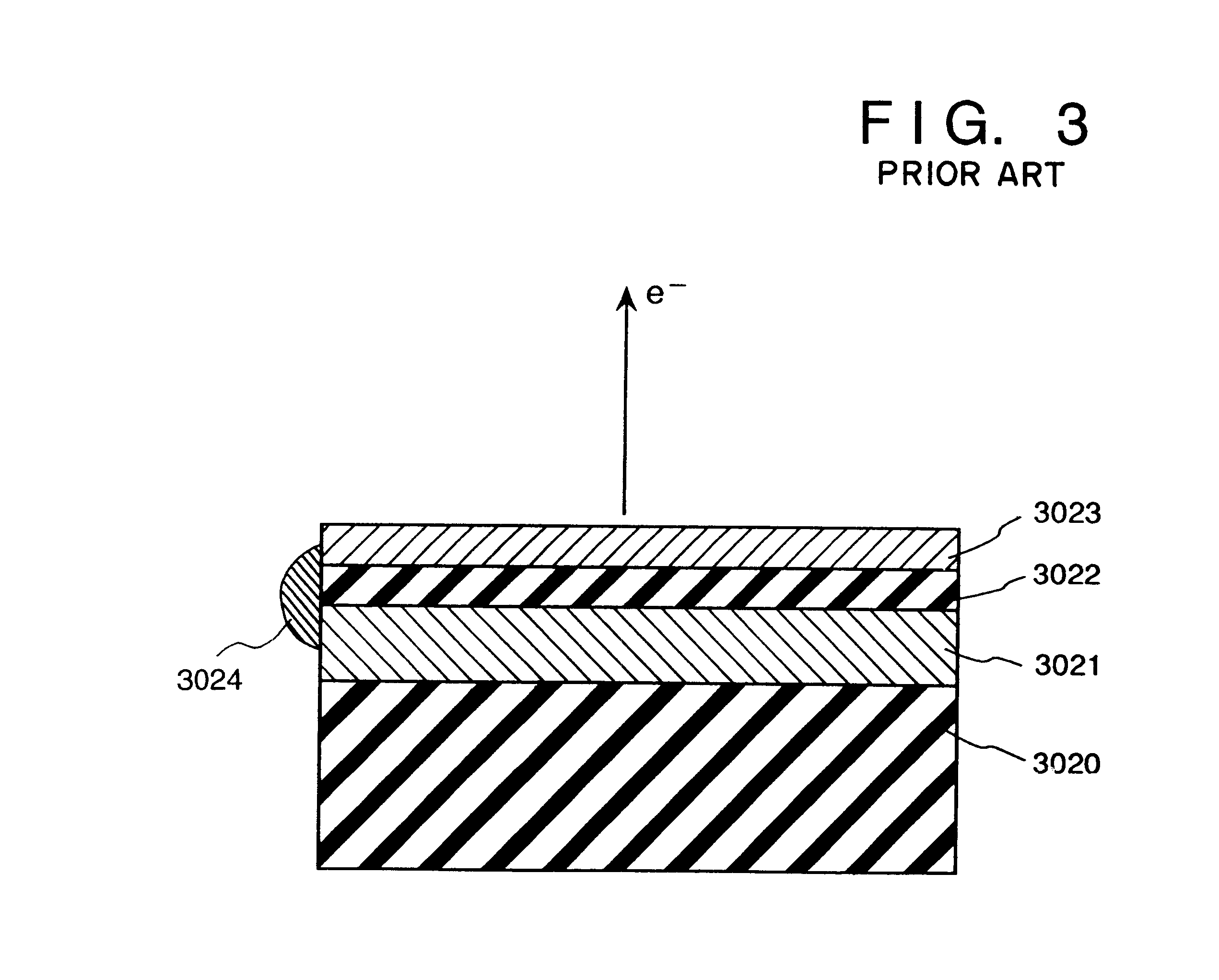Electron-beam generating device having a plurality of cold cathode elements, method of driving said device and image forming apparatus applying same
- Summary
- Abstract
- Description
- Claims
- Application Information
AI Technical Summary
Problems solved by technology
Method used
Image
Examples
fifth embodiment
In the fifth embodiment, the pulse width of current applied to a column wire is held constant at all times. This means that a pulse-width modulating circuit is unnecessary. FIG. 35 illustrates the flow of a video signal in the fifth embodiment of the invention from entry of the signal to a decoder 5503 to delivery of the signal to an image display panel 5501. In this embodiment, the structure of the surface-conduction electron emission elements and panel, the method of creating LUT 1, the method of creating LUT 2 and the V / I converting circuit, etc., are the same as in the fourth embodiment. The fifth embodiment differs from the fourth embodiment in the provision of an arithmetic circuit 5507 and pulse-height converting circuit 5511. The pulse-height converting circuit 5511 outputs pulses having a fixed duration but a pulse height that is commensurate with the output data from the S / P converting circuit 5510.
FIG. 36 illustrates the flow of data in the arithmetic circuit 5507. A vide...
sixth embodiment
In the sixth embodiment, the luminance signal of an image compensated for a variance in electron emission efficiency .eta.(M,N) of each element stored in LUT 2 is represented by time during which current is passed into each element, and a correction for a disparity in leakage current due to each column wire is performed based upon the amount of current passed through each element. The flow of signal processing is shown in FIG. 22, which was used in the fourth embodiment. This embodiment differs from the fourth embodiment in the arithmetic circuit 4107 and the modulating circuit 4111. FIG. 38 is a diagram showing an arrangement of the arithmetic circuit 4107 of the sixth embodiment.
A dividing circuit 6803 calculates a correction luminance signal A(M,N) from the luminance signal applied to the element (M,N), the electron emission efficiency .eta.(M,N) of element (M,N) obtained from LUT 2, and a minimum electron emission efficiency .eta..sub.min from among all of the m.times.n elements...
seventh embodiment
In the description of the seventh embodiment, first the general features will be-discussed. Second, a method of creating a LUT will be described, in which the LUT stores the wiring resistance of the leakage current component of each column wire. Third, actual drive of an image display will be described in detail. Fourth, the principles of the seventh embodiment will be described. Fifth, the effects obtained by practicing the seventh embodiment will be described. The construction and method of manufacturing the image display panel, the method of manufacturing a multiple electron source and the method of fabricating a surface-conduction electron emission element are identical with those of the first embodiment.
{1. General Features of the Seventh Embodiment}
In the seventh embodiment, means are provided for measuring the potentials of n-number of column wires at all times. Before the image display is driven, the wiring resistance of the leakage current component is determined and stored...
PUM
 Login to View More
Login to View More Abstract
Description
Claims
Application Information
 Login to View More
Login to View More - R&D
- Intellectual Property
- Life Sciences
- Materials
- Tech Scout
- Unparalleled Data Quality
- Higher Quality Content
- 60% Fewer Hallucinations
Browse by: Latest US Patents, China's latest patents, Technical Efficacy Thesaurus, Application Domain, Technology Topic, Popular Technical Reports.
© 2025 PatSnap. All rights reserved.Legal|Privacy policy|Modern Slavery Act Transparency Statement|Sitemap|About US| Contact US: help@patsnap.com



